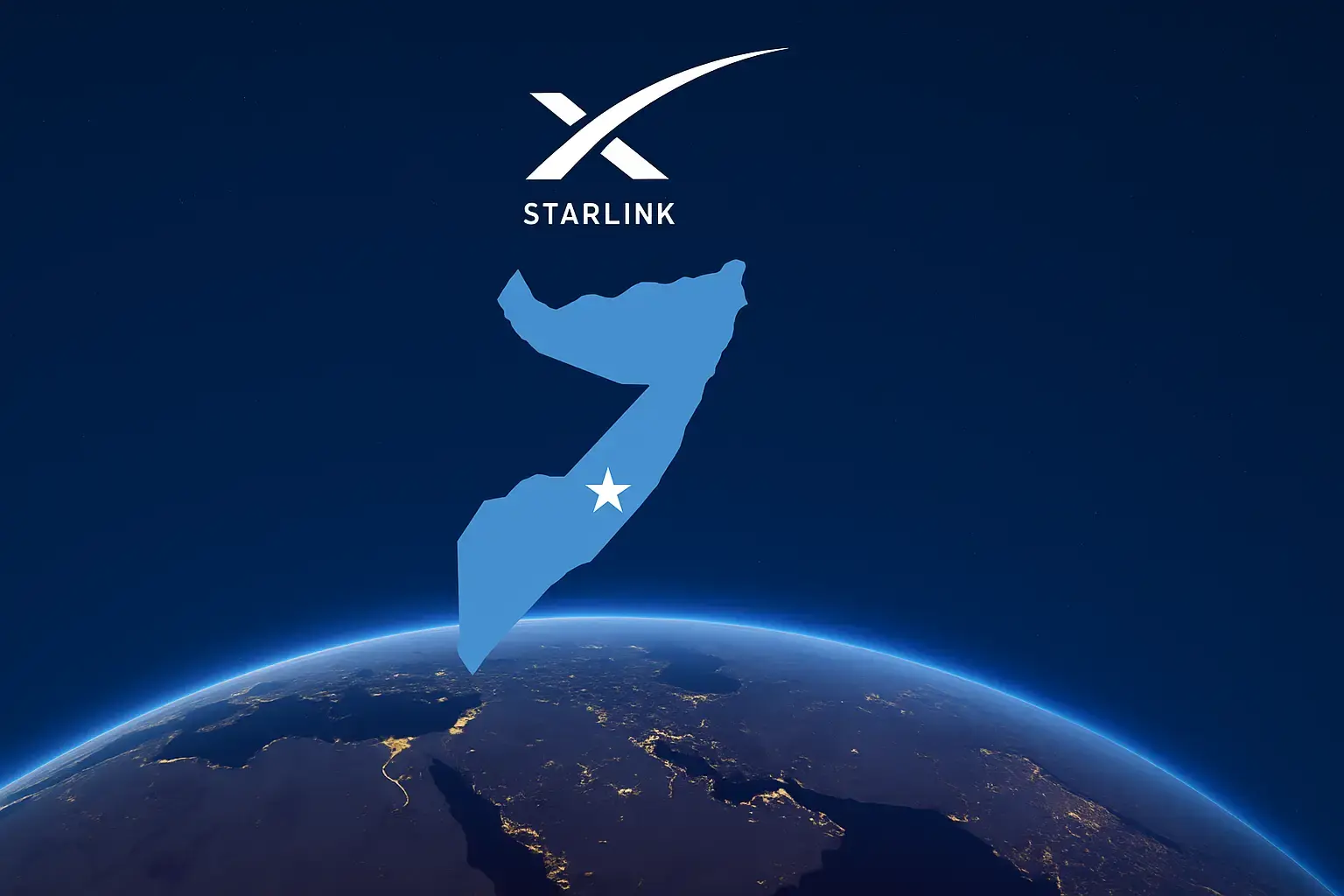In a landmark development for digital inclusion, SpaceX’s Starlink satellite internet service officially launched in Somalia on August 5, 2025, marking a significant step in the country's digital development. This launch, which follows the National Communications Authority's (NCA) approval in April 2025, is aimed at bridging the digital divide by providing high-speed, low-latency internet to both urban and remote areas. The service is now operational nationwide, with users able to order kits and subscribe to plans directly from the Starlink website.
This makes Somalia the latest African country to join the Starlink network, which already includes Kenya, Nigeria, Rwanda, Mozambique, Zambia, and Malawi, among others. With this rollout, Starlink is rapidly cementing its position as the go-to internet solution for underserved and hard-to-reach regions across the continent.
The Dawn of High-Speed Internet in Somalia
Somalia has long grappled with limited internet access, with only about 30% of its population connected as of 2022. Decades of conflict, inadequate terrestrial infrastructure, and reliance on vulnerable undersea fiber optic cables like the Eastern Africa Submarine Cable System (EASSy) and Djibouti Africa Regional Express (DARE1) have left rural and nomadic communities largely offline. Starlink’s low-Earth orbit (LEO) satellite technology, which operates at altitudes of approximately 550 kilometers, promises to change this narrative by delivering high-speed, low-latency internet (25-60 milliseconds) to even the most remote regions.
The National Communications Authority (NCA) of Somalia granted Starlink a 10-year operational license in April 2025, following over two years of negotiations. The launch, announced by Elon Musk on X, covers major cities like Mogadishu, Hargeisa, and Bosaso, as well as rural and coastal areas, ensuring nationwide connectivity. This marks Somalia as Starlink’s 25th African market, following recent expansions in Chad, Lesotho, Niger, and the Democratic Republic of Congo.
We hope Starlink will increase the quality of the existing internet in Somalia and will make the internet service reach more remote areas,” said Mustafa Yaasin Sheik, Director General of the NCA.
Starlink is officially available in Somalia, marking a significant step in the country's digital development. This launch, which follows the National Communications Authority's (NCA) approval in April 2025, is aimed at bridging the digital divide by providing high-speed, low-latency internet to both urban and remote areas. The service is now operational nationwide, with users able to order kits and subscribe to plans directly from the Starlink website.
Pricing and Plans in Somalia
Starlink's arrival introduces new internet options to the Somali market, but it's important to understand the costs involved. The pricing is divided into two parts: the hardware cost and the monthly service fee.
- Hardware Cost: The one-time cost for the Starlink kit (which includes the dish, Wi-Fi router, cables, and base) is SOS 220,000, which is approximately $390 USD.
- Monthly Subscription: The residential service plan costs SOS 40,000 per month, which is around $70 USD.
While these prices may seem high compared to some local providers, Starlink's value proposition lies in its superior performance and coverage in areas where traditional internet infrastructure is limited or nonexistent.
Coverage and Availability
According to Starlink's official coverage map, the entire country of Somalia is marked as "AVAILABLE." This means that residents across Somalia, including major cities like Mogadishu, Hargeisa, and Bosaso, can now place orders and access the service without a waitlist. The satellite-based nature of Starlink's service means it can bypass the need for extensive ground infrastructure, making it an ideal solution for providing connectivity in remote and underserved regions.
How Starlink Compares to Local Providers
Somalia already has several well-established internet service providers (ISPs) like Hormuud and Somtel, which offer competitive plans, including 5G in some urban areas. These local providers often use a combination of undersea fiber-optic cables and terrestrial networks, offering relatively fast and affordable internet in connected regions.
However, Starlink's main advantage is its ability to provide reliable service in areas that are not reached by these ground-based networks. This is especially beneficial for rural communities, businesses in remote locations, and organizations that need a resilient backup connection. The key trade-off for consumers is the higher initial cost and monthly fee for Starlink versus the potentially lower cost and unlimited data plans offered by some local providers.
- Local Providers:
- Pros: Generally lower monthly costs, cheap unlimited data plans in some cases, and well-established local support.
- Cons: Limited to areas with existing infrastructure, which often excludes many rural and remote regions.
- Starlink:
- Pros: High-speed, low-latency internet available nationwide, excellent for remote areas, and a reliable connection that bypasses damaged or non-existent terrestrial networks.
- Cons: Higher initial hardware cost and a more expensive monthly subscription compared to many local options.
How to Get Started with Starlink in Somalia
For Somalis interested in Starlink, the process is simple:
- Check Availability: Visit starlink.com/somalia to confirm service availability.
- Order Equipment: Purchase the Starlink dish for approximately $349. Shipping estimates are around two weeks.
- Set Up: Install the dish with a clear sky view, following the Starlink app’s guidance.
- Subscribe: Choose a plan (approximately $120/month) and provide a photo ID matching account details.
A 30-day trial with no contracts or data caps is available, offering flexibility for new users.
Starlink’s launch in Somalia on August 5, 2025, marks a pivotal moment for digital connectivity in the Horn of Africa. By providing high-speed, low-latency internet to urban and remote areas alike, Starlink has the potential to transform education, healthcare, business, and governance. However, challenges like affordability, security, and geopolitical tensions with Somaliland must be navigated carefully. As Somalia embraces this new era of connectivity, Starlink’s impact could redefine its digital landscape, fostering economic growth and social progress in one of the world’s most underserved regions.
For more details on Starlink’s services in Somalia, visit starlink.com. For updates on Somalia’s telecom policies, check the National Communications Authority’s official channels.
Read more Tech News
